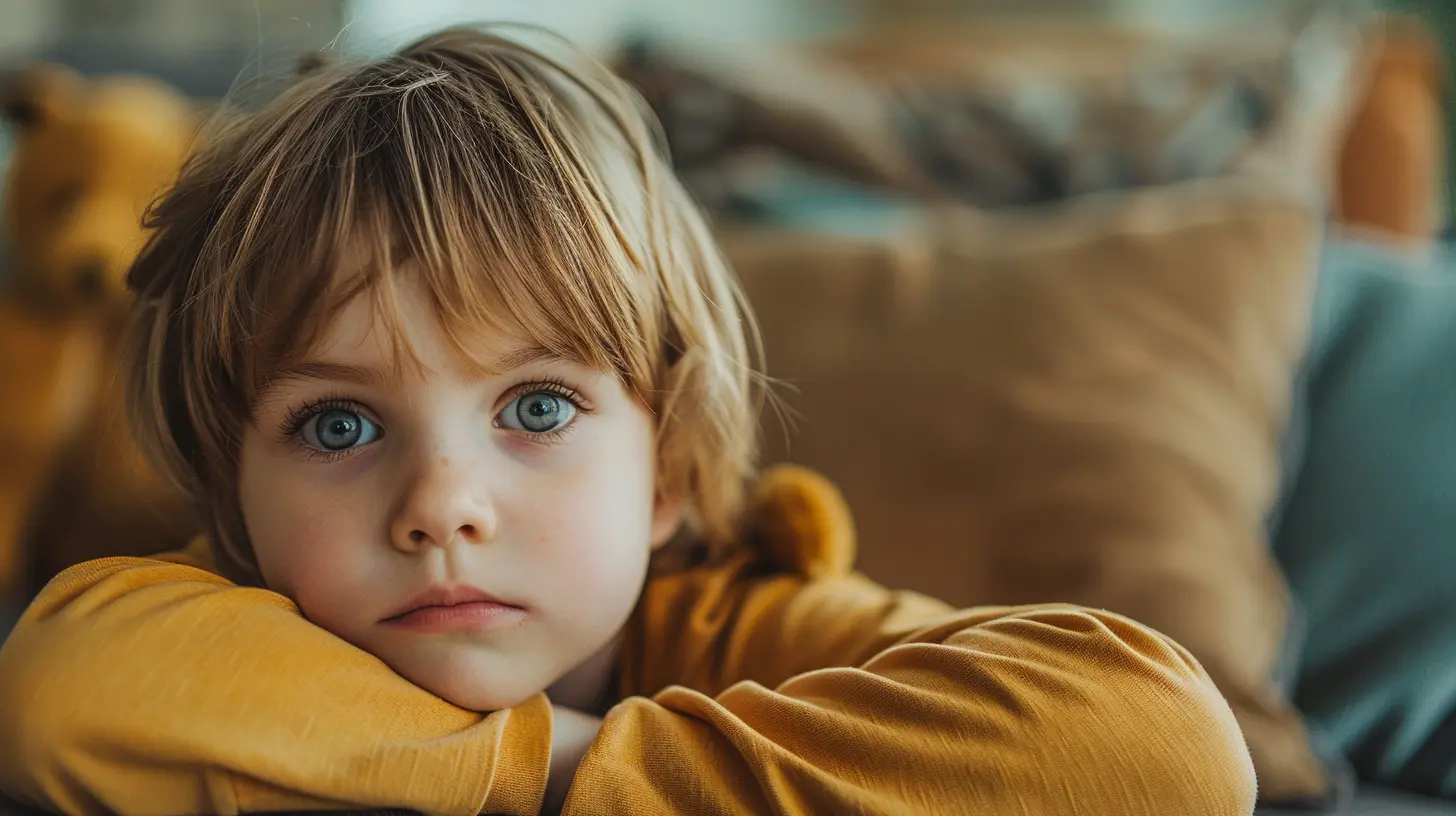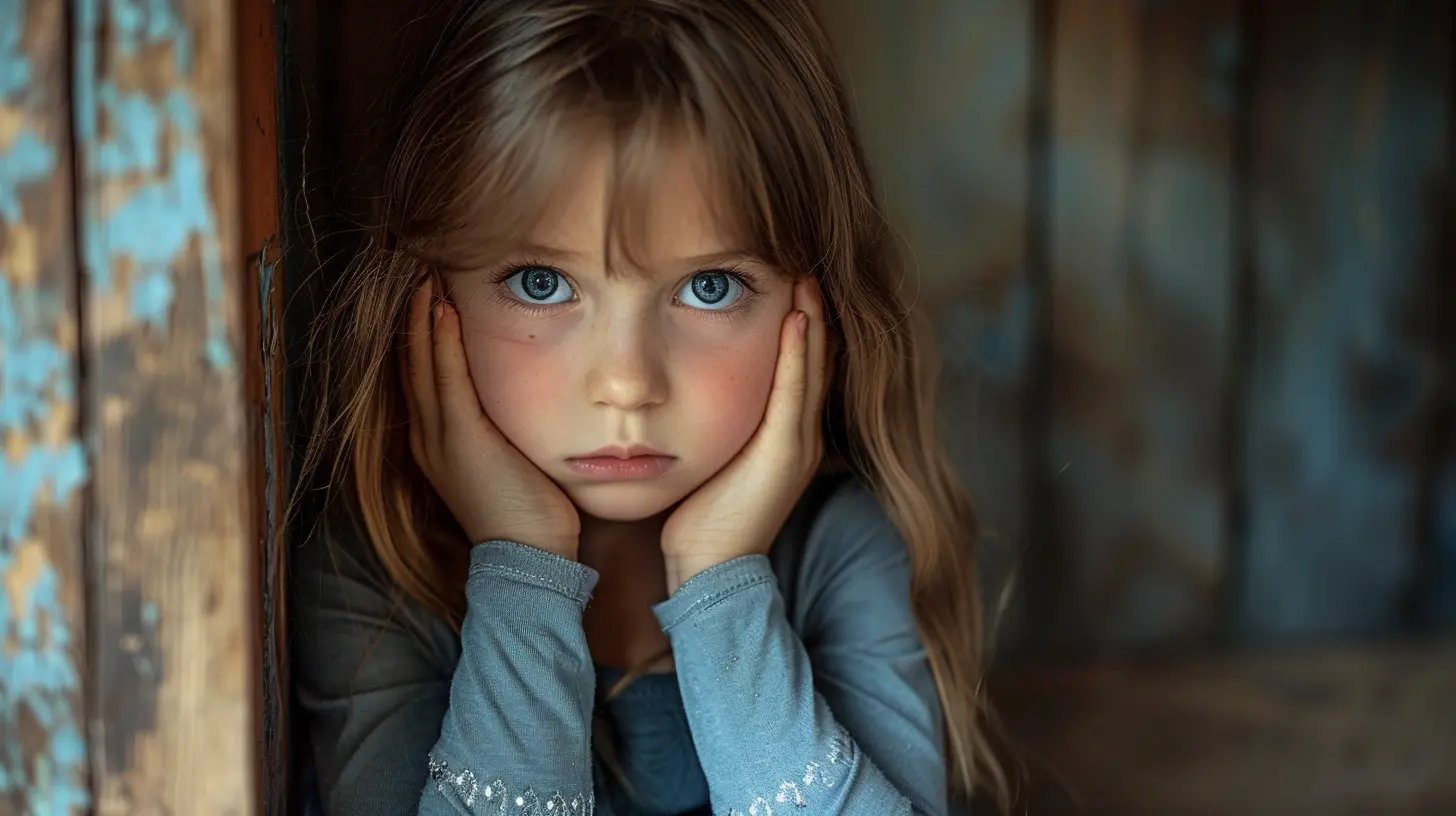The Importance of Routine in Managing Childhood Anxiety Disorders
18 August 2025
Anxiety in children is more common than we often realize. It lurks in the shadows of their minds, making everyday tasks feel like climbing Mount Everest. But what if there was a simple, effective way to provide them with stability and peace of mind? That’s where routine comes in—a powerful yet underrated tool that can help children manage anxiety and regain a sense of control.
In this article, we’ll dive deep into why routine matters, how it helps reduce anxiety, and practical ways to introduce and maintain routines for anxious kids.

Why Routine is a Game-Changer for Anxious Kids
Imagine waking up one day and having no clue what’s coming next. No plan, no structure—just uncertainty. Sounds unsettling, right? Now, imagine how a child with anxiety feels when their days are unpredictable. Routine is like a roadmap, guiding them through their day with structure, consistency, and predictability.Children with anxiety disorders thrive on knowing what to expect. When their world feels chaotic, a solid routine becomes their anchor. It minimizes stress, reduces uncertainty, and provides them with a sense of security and stability.
The Science Behind Routine and Anxiety
Research consistently shows that predictability reduces stress. When kids know what’s coming next, their brain doesn’t go into overdrive, constantly guessing or worrying about the unknown. This lowers cortisol levels (the stress hormone) and helps them feel calmer.A study published in the Journal of Child Psychology and Psychiatry found that structured routines not only decrease anxiety but also improve emotional regulation in children. In other words, kids who have set routines are better at managing their emotions and handling stressful situations.

The Key Benefits of Routine for Childhood Anxiety
Let’s break it down. Here are some of the biggest ways routine helps anxious children:1. Creates a Sense of Control
Anxiety often stems from feeling out of control. When kids have a routine, they know what to expect, which gives them a sense of mastery over their environment. When they feel in control, their anxiety automatically lessens.2. Reduces Decision Fatigue
You wouldn't think that kids experience decision fatigue, but they do. Too many choices can be overwhelming, especially for children who are already prone to anxiety. A routine takes decision-making out of the equation, allowing them to focus on the task at hand rather than constantly worrying about what comes next.3. Helps With Sleep Regulation
Sleep and anxiety are closely linked. Anxious kids often struggle with falling or staying asleep because their minds are racing. A bedtime routine signals to the brain that it’s time to wind down, making it easier for them to relax and drift off.4. Encourages Independence and Confidence
When kids follow a consistent routine, they don’t need to rely on others to tell them what to do every step of the way. Over time, this builds confidence and fosters independence—both of which are crucial in managing anxiety.5. Strengthens Emotional Resilience
Routine helps children develop emotional resilience by teaching them how to handle transitions and changes in a structured manner. When they learn to follow routines despite feeling anxious, they gain confidence in their ability to cope with life's uncertainties.
How to Create an Anxiety-Reducing Routine for Kids
Now that we know why routines matter, let’s talk about how to build an effective one. The key is balance—a routine shouldn't be rigid, but it also shouldn't be so flexible that it lacks structure. Finding that sweet spot is essential.1. Start With Small, Achievable Steps
If your child isn’t used to following a routine, don’t overwhelm them with a strict schedule overnight. Instead, introduce one or two small changes at a time. Once they get used to them, gradually add more structured activities.2. Create a Morning Routine
Mornings can be a nightmare for anxious kids—there’s so much to do, and rushing only makes things worse. A structured morning routine helps set the tone for the day. Consider including:- A wake-up time that stays the same every day
- A few minutes of calm breathing or stretching
- Getting dressed and brushing teeth in a predictable order
- A balanced breakfast before heading to school
3. Set Up a Home-from-School Routine
The transition from school to home can be stressful. Reduce this anxiety-triggering time by setting up an after-school routine like:- A snack and relaxation period
- Homework or quiet reading time
- Outdoor play or physical activity
- Screen time (moderated) as a reward
4. Establish a Calming Nighttime Routine
As we mentioned earlier, sleep plays a huge role in anxiety management. A predictable bedtime routine should include:- Turning off screens at least an hour before bed
- Bathing or showering to signal relaxation
- Reading a book or listening to calming music
- A consistent bedtime to regulate their sleep cycle
5. Use Visual Schedules for Younger Kids
If your child struggles with remembering their routine, visual schedules work wonders. You can use pictures, checklists, or even apps to help them stay on track.6. Build in Free Time and Flexibility
A common mistake parents make is over-scheduling. Kids need routine, but they also need unstructured time to play, be creative, and decompress. Don’t pack their day so tightly that they feel pressured to follow a rigid timeline.7. Involve Your Child in the Process
Empower your kids by letting them help design their routine. When they feel involved, they’re more likely to follow through without resistance. Ask them questions like:- "What do you think would help you feel calmer in the morning?"
- "Should we add a fun activity after school?"
- "How can we make bedtime easier for you?"
8. Be Consistent But Flexible
Life happens—there will be days when the routine gets thrown off. That’s okay! The goal is consistency, not perfection. Teach kids that small disruptions don’t mean failure, and they can always jump back into their routine the next day.
When to Seek Professional Help
While routine can greatly reduce anxiety, it’s not always enough. If your child’s anxiety is severe, persistent, or interfering with daily life, professional support may be needed. Signs to watch for include:- Frequent panic attacks or excessive worrying
- Avoiding school, social activities, or responsibilities
- Physical symptoms like headaches, stomachaches, or fatigue with no medical explanation
- Sleep disturbances that don’t improve with routine changes
In such cases, consulting a child psychologist or therapist can provide additional tools and strategies to help manage their anxiety.
Final Thoughts
Routine isn’t just about structure—it’s about creating a safe, predictable environment for children to thrive in. For kids with anxiety, routine is a lifeline that offers them a sense of control, security, and peace of mind.So, if you’re struggling to help your anxious child, start with small, intentional routines. You’ll be amazed at how something as simple as consistency can make a world of difference in their mental well-being.
all images in this post were generated using AI tools
Category:
Psychological Disorders In ChildAuthor:

Eliana Burton
Discussion
rate this article
1 comments
Blair McClain
Thank you for highlighting the significance of routine in managing childhood anxiety. Your insights resonate deeply, and I appreciate the practical strategies you’ve shared. They are invaluable for both parents and caregivers navigating these challenges.
September 10, 2025 at 4:40 AM

Eliana Burton
Thank you for your kind words! I'm glad to hear that the insights and strategies resonate with you and can help parents and caregivers. Your support is greatly appreciated!


